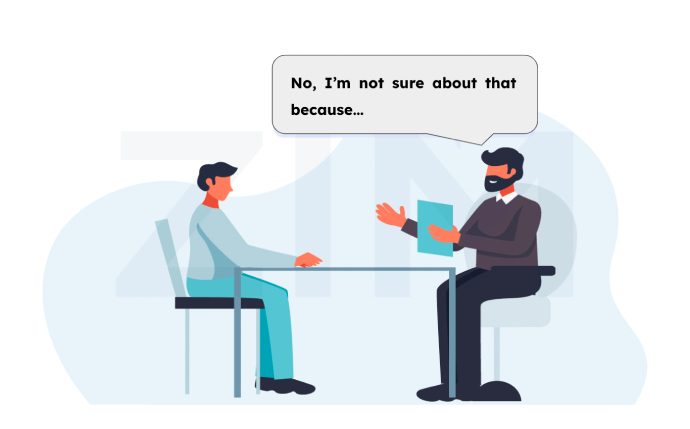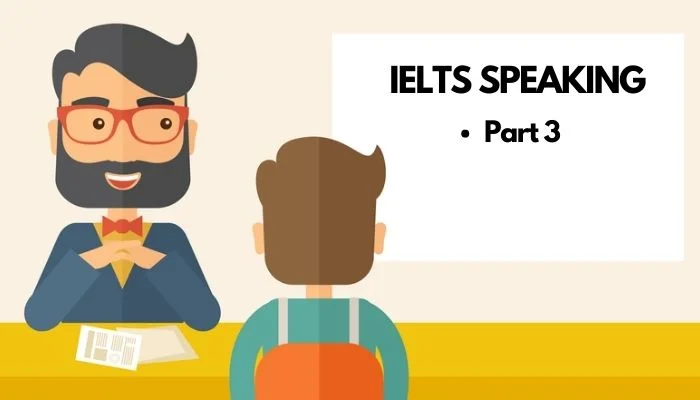How to Impress the Examiner in IELTS Speaking: The Ultimate Guide
While your primary goal in the IELTS Speaking test is to demonstrate English proficiency, understanding the human element is equally vital. Interacting appropriately with the examiner in IELTS Speaking can significantly boost your confidence and ensure smooth communication. At IELTS-Testpro, we believe that fostering this positive environment is key to performing at your best, and this guide will show you exactly how to make a lasting impression through proper etiquette and natural engagement.

I. Before meeting the examiner in IELTS Speaking
The test begins the moment you enter the room. A strong start sets a positive tone for the entire session.
- The entrance: Enter the room confidently. Close the door gently—slamming it can signal nervousness or aggression.
- The greeting: Briefly introduce yourself with a smile. It is perfectly acceptable (and friendly) to ask the examiner’s name, e.g., “Good morning. I’m [Your Name]. May I ask your name?” This small gesture humanizes the interaction.
- Body language: Keep your facial expressions open and positive. A smile goes a long way.
- Seating etiquette: Avoid sitting down immediately while the examiner is still standing. Wait for a cue, or politely ask, “May I sit?”. This shows respect and cultural awareness.
II. Engagement with the examiner in IELTS Speaking
Once the test begins, your focus should shift to delivering natural, fluent responses. However, keep these behavioral tips in mind:

1. Manners:
- Sit Up Straight: Do not slouch or lean back lazily on the chair. Sit upright with your hands resting comfortably on your thighs or the desk. This posture helps with breathing and voice projection.
- Eye Contact: Maintain natural eye contact. It shows you are confident and listening activey.
2. Attire & Comfort
While there is no strict dress code, IELTS-Testpro recommends a “Smart-Casual” look.
- Comfort is Key: Wear clothes that make you feel confident and comfortable. If you are physically uncomfortable, it will distract you.
- Presentation: Clean, tidy attire shows that you take the exam seriously. Avoid overly distracting patterns, but don’t feel pressured to wear a suit.
3. Interaction: It’s a Dialogue, Not a Monologue
The IELTS Speaking test is such a conversation or a discussion rather than a monologue. As a result, you should express your opinions, especially in IELTS Speaking part 1 and part 3, as naturally as possible.
Here are several common phrases should be used:
- Without a doubt, …
- In all seriousness, …
- To be honest, …
- As you might guess I…
- This may surprise you but…
- Let me put it to you like this…
- I’m not sure if you agree but…
- As I was saying to you just now…
- To answer your question…
- To come back to the question you asked…
- You might disagree with this but I think…
Besides, you need to be proactive during the IELTS Speaking test by giving some additional sentences such as
- “What a question!”
- “Wow, that’s really out of my scope of expertise.”
- “Excuse me, could you please explain/define …?”
- “I’m a little confused about the word …; can you tell me what it means.”
- “Can you give me an example of …?”
- “Could you speak louder and slower, please?”
- “Sorry, I didn’t quite catch that. Can you repeat the question for me, please?”
etc.
III. Ending the session with the examiner in IELTS Speaking
The test ends when the examiner says, “That’s all” or “That’s the end of the Speaking test.”
- The Exit: Don’t just rush out. Instead of a standard “Goodbye,” try a warmer closing: “Thanks for your time. Have a good day!” or “Thank you, I enjoyed speaking with you.”
- The Reality Check: While being polite won’t add “bonus points” to your band score (which is strictly based on the rubric), leaving with a professional demeanor ensures you remain calm and composed until the very last second.
Let’s get started with our free IELTS online test to pass your exam on your first attempt.

IV. Don’ts to avoid with the examiner in IELTS Speaking
To protect your score, IELTS-Testpro advises you to avoid these common pitfalls:
- Don’t memorize answers: Examiners are trained to spot scripted responses. Your intonation will flatten, and you will lose marks for pronunciation and fluency. Be spontaneous!
- Don’t overuse “Interesting Question”: saying “That’s an interesting question” for every answer sounds mechanical. Vary your openers.
- Don’t use rigid transition words: Avoid academic writing connectors like “Moreover,” “Therefore,” or “Nevertheless” in speech. Instead, use natural spoken connectors like “So,” “And,” “But,” “Actually,” or “Plus.”
- Don’t get personal: Never ask the examiner personal questions (e.g., their age, marital status, or how they think you scored). This violates protocol and can create an awkward atmosphere.
Want to practice these interactions before the real day? Try our IELTS online test simulation or download the IELTS Test Pro app to build your confidence and pass your exam on the first attempt!